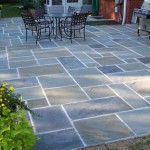How to Create a Paver Patio: A Step-by-Step Guide
Constructing a paver patio is a rewarding Do-It-Yourself (DIY) project that can significantly enhance the aesthetic appeal and functionality of an outdoor space. While it requires physical effort and careful planning, the result is a durable and visually appealing surface that can last for many years. This article provides a comprehensive guide to building a paver patio, covering all essential steps from initial planning to final installation.
Before embarking on the project, it is crucial to understand the importance of proper preparation. A well-prepared base is the foundation of a long-lasting paver patio. Neglecting this aspect can lead to issues such as uneven settling, weed growth, and paver displacement. Therefore, meticulous attention to detail during the preparation phase is paramount.
Planning and Preparation
The initial stage involves careful planning and preparation. This includes determining the size and shape of the patio, selecting the appropriate pavers, and gathering all necessary tools and materials. A detailed plan will streamline the process and minimize potential errors.
Start by measuring the desired area for the patio. Consider factors such as the intended use of the space, the size of furniture you plan to place on the patio, and the overall aesthetics of the surrounding landscape. Mark the perimeter of the patio using stakes and string. This will serve as a visual guide throughout the construction process. It is advisable to choose a simple shape for a first-time project, such as a square or rectangle, to simplify the cutting and installation process.
Next, select the pavers that best suit your aesthetic preferences and budget. Pavers are available in a wide variety of materials, shapes, sizes, and colors. Concrete pavers are a popular choice due to their affordability and durability. Brick pavers offer a classic look but may be more expensive. Natural stone pavers, such as flagstone or bluestone, provide a unique and rustic appearance, but they can be the most expensive option and require more specialized installation techniques. Consider the overall design of your property when choosing pavers to ensure a cohesive and harmonious appearance. Order slightly more pavers than you estimate you will need to account for cuts and potential breakage.
Gather all the necessary tools and materials. Essential tools include a shovel, a wheelbarrow, a tamper (either manual or plate compactor), a level, a measuring tape, a rubber mallet, a circular saw with a diamond blade (for cutting pavers), safety glasses, work gloves, and a broom. Material requirements include landscape fabric, base material (such as crushed stone), bedding sand, and paver sealant (optional). Ensuring you have all the necessary tools and materials before starting the project will prevent delays and frustration.
Before excavation, it is crucial to check for underground utilities. Contact your local utility companies to mark the locations of buried lines to avoid accidental damage during the digging process. This step is essential for safety and can prevent costly repairs.
Excavation and Base Construction
With the planning and preparation complete, the next phase involves excavation and base construction. This is a critical step in ensuring the stability and longevity of the paver patio. A properly constructed base will provide a stable foundation, preventing settling and shifting of the pavers over time.
Begin by excavating the area within the marked perimeter. The depth of the excavation will depend on the thickness of the pavers, the depth of the base material, and the depth of the bedding sand. As a general guideline, excavate to a depth of approximately 8-12 inches below the desired finished grade of the patio. This allows for a sufficient base layer (typically 4-6 inches), a bedding sand layer (approximately 1 inch), and the paver thickness (typically 2-4 inches). Ensure the excavation is level and uniform throughout the entire area. Use a level to check the depth and make adjustments as needed.
Once the excavation is complete, install landscape fabric over the exposed soil. Landscape fabric will prevent weed growth and help to maintain the integrity of the base layer by preventing soil from mixing with the crushed stone. Overlap the edges of the fabric by several inches to ensure complete coverage.
Next, add the base material. Crushed stone, such as crushed gravel or recycled concrete, is an excellent choice for the base layer. Spread the crushed stone evenly over the landscape fabric, using a shovel and wheelbarrow to distribute the material. Aim for a layer that is 4-6 inches thick. Use a tamper to compact the crushed stone thoroughly. Compaction is essential for creating a stable and level base. If using a manual tamper, make multiple passes over the entire area. If using a plate compactor, follow the manufacturer's instructions for proper operation.
After compacting the base layer, check the level of the surface. Use a level to identify any high or low spots. Add or remove crushed stone as needed to create a perfectly level base. Proper leveling at this stage is crucial for ensuring a smooth and even paver surface.
Paver Installation and Finishing
The final stage involves installing the pavers, adding the bedding sand, and completing the finishing touches. With a correctly prepared base, the paver installation process should proceed smoothly and efficiently.
Spread a layer of bedding sand over the compacted base material. Bedding sand provides a level surface for the pavers and helps to cushion them. Use a screed board to evenly distribute the sand to a depth of approximately 1 inch. The screed board should be slightly wider than the patio area. Drag the screed board across the sand to create a smooth and level surface. Avoid walking on the prepared sand layer, as this can create uneven spots. If you accidentally step on the sand, re-level the area before proceeding.
Begin laying the pavers according to your chosen pattern. Start at one corner of the patio and work your way across, placing each paver snugly against the adjacent one. Use a rubber mallet to gently tap each paver into place, ensuring it is level with the surrounding pavers. Check the level frequently to maintain a consistent surface. If necessary, add or remove small amounts of bedding sand to adjust the level of individual pavers.
When you reach the edges of the patio, you will likely need to cut some of the pavers to fit. Use a circular saw with a diamond blade to cut the pavers to the required size. Wear safety glasses and work gloves to protect yourself from flying debris. Make clean and precise cuts to ensure a professional-looking result. Dispose of the cut paver pieces properly.
Once all the pavers are in place, sweep a fine sand (polymeric sand is often recommended for its stabilizing properties) over the entire patio surface. Use a broom to work the sand into the joints between the pavers. The sand will help to lock the pavers together and prevent them from shifting. Sweep away any excess sand from the paver surface.
Finally, consider applying a paver sealant to protect the pavers from staining and weathering. Paver sealant can also enhance the color of the pavers and make them easier to clean. Follow the manufacturer's instructions for proper application. Choose a sealant that is specifically designed for the type of pavers you have installed.
After the sealant has dried completely, your paver patio is ready to be enjoyed. Add furniture, plants, and other decorative elements to create a welcoming and functional outdoor space. Regular maintenance, such as sweeping and occasional cleaning, will help to keep your paver patio looking its best for years to come.

How To Build A Backyard Paver Patio All By Yourself Youtube

How To Install A Diy Paver Patio The Easy Way Angela Marie Made

How To Build A Paver Patio Rogue Engineer

Diy Paver Patio And Firepit Life On Shady Lane

How To Build A Patio That Will Last Lifetime Easton Outdoors

Diy Pea Gravel Patio With Pavers Love Renovations

How To Build A Paver Patio Rogue Engineer

How To Build A Paver Patio Young House Love

How To Build A Patio In Weekend Fine Gardening

We Built A Paver Patio Like Pro Start To Finish Youtube








